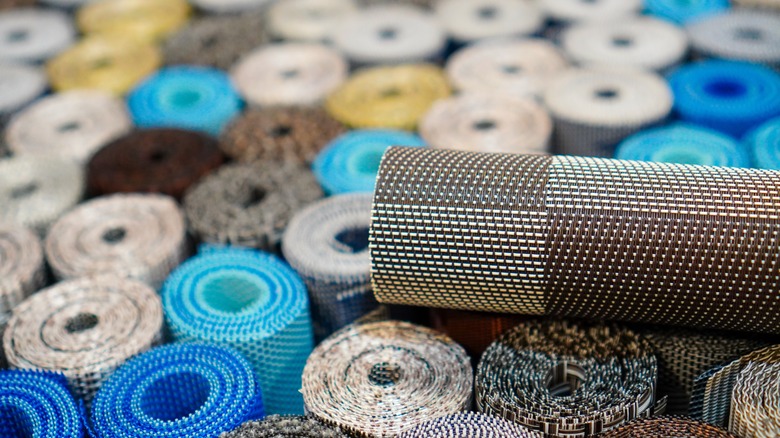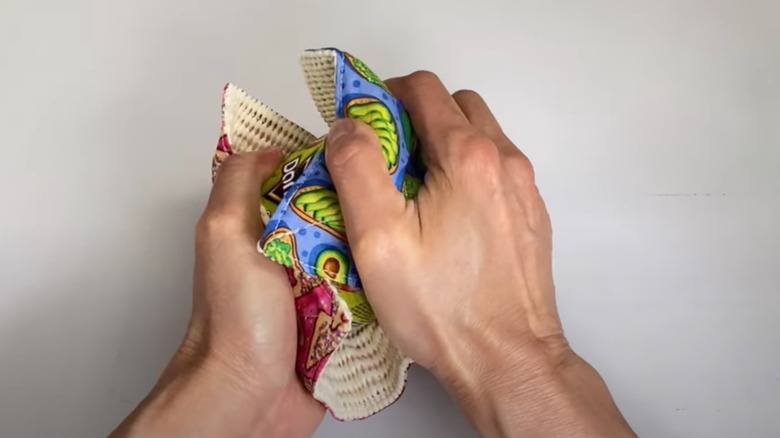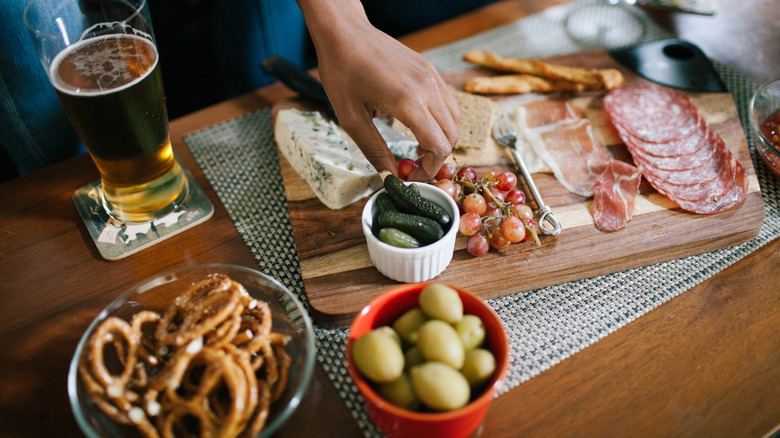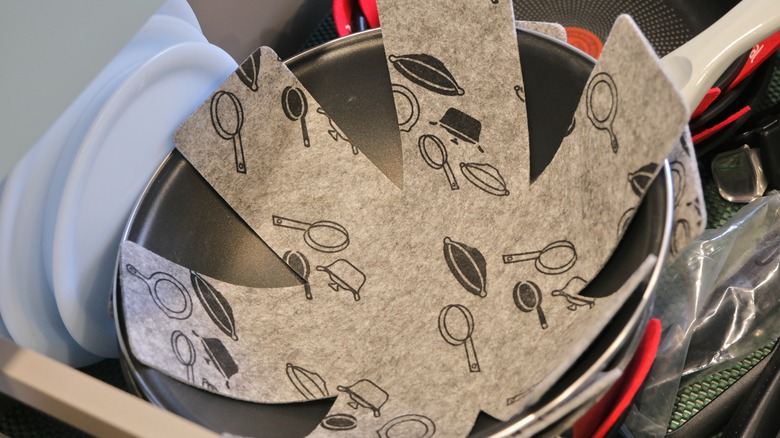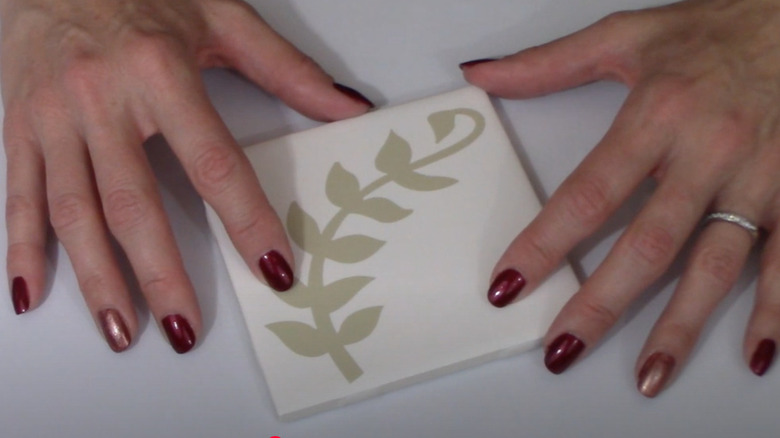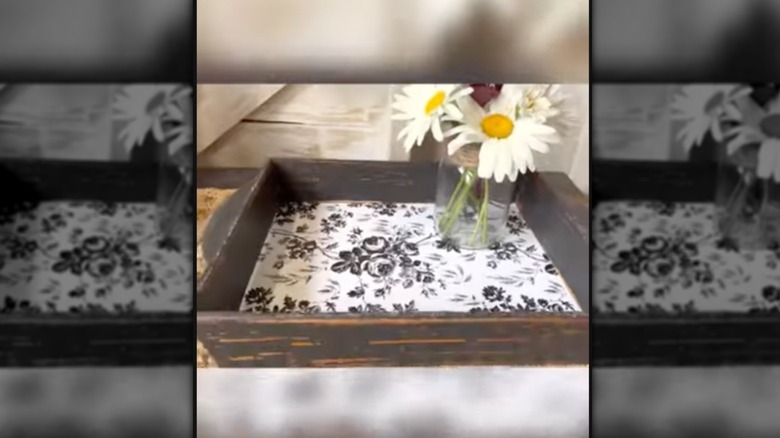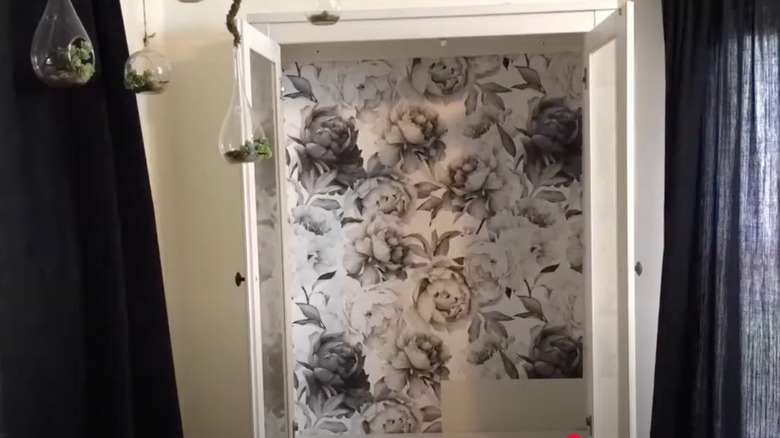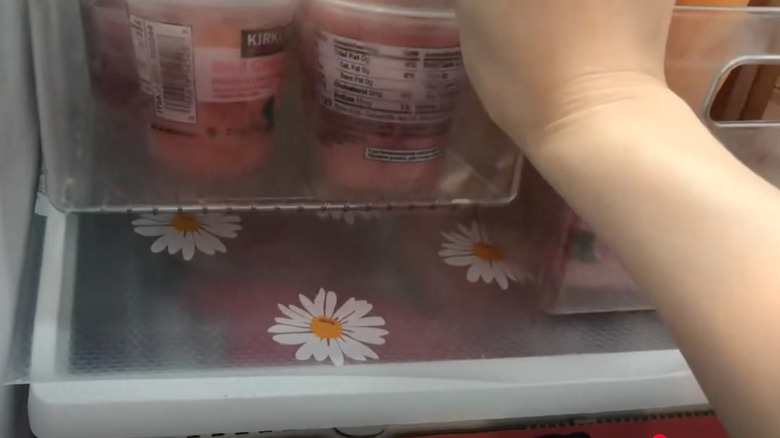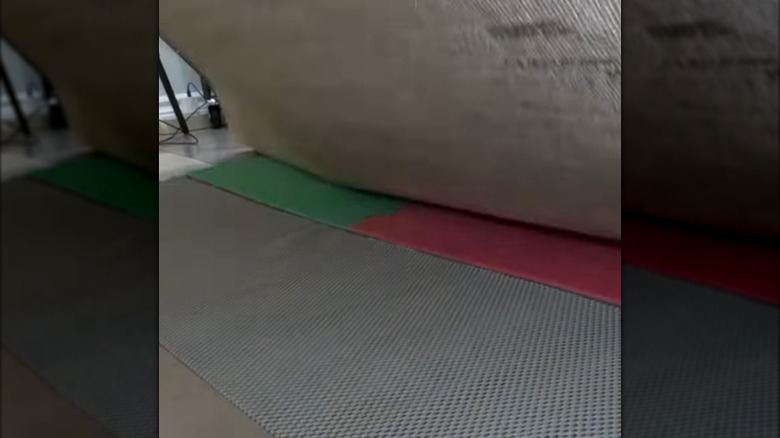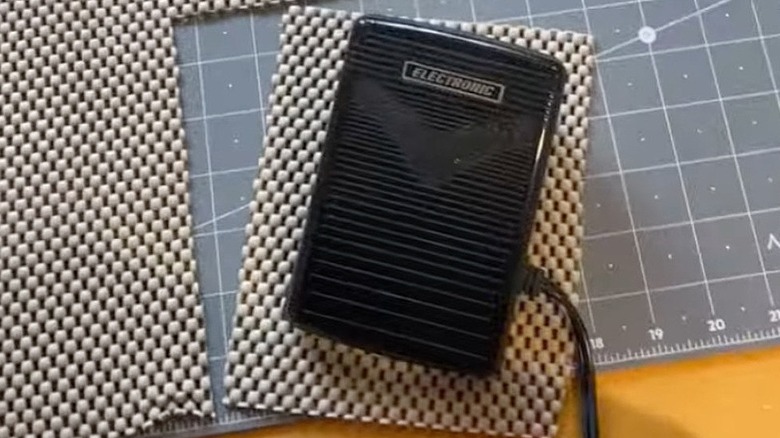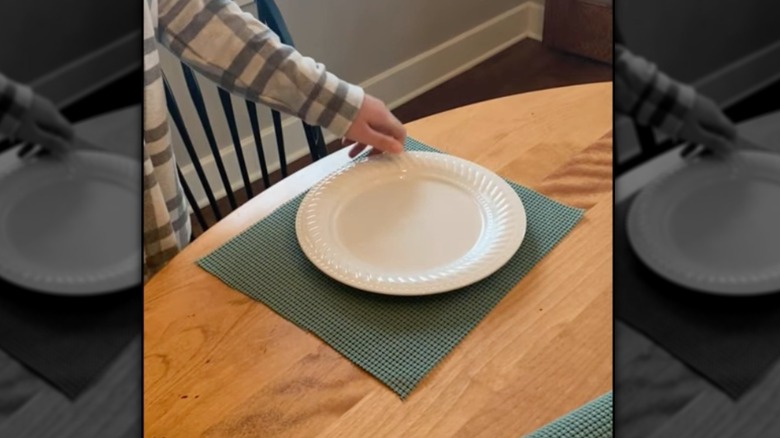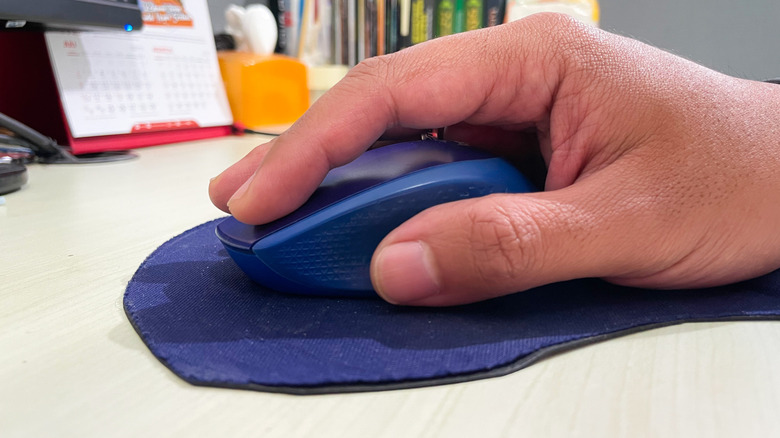Don't Throw Out That Leftover Shelf Liner — Try These 11 Ideas To Reuse It
We may receive a commission on purchases made from links.
Just finished a home project and found yourself dealing with leftover shelf liner? Don't throw out any extra pieces; instead, consider setting them aside and finding ways to repurpose them around the house. You'll be surprised just how durable and truly versatile shelf liner can be when it comes to functionality and different uses inside your home. Shelf liner can be used in nearly every room of the house, from keeping cutting boards from sliding in the kitchen to the office as a DIY mousepad.
What sets shelf liner apart from other materials is that it's available in numerous different styles, grips, and finishes. You can find options that are designed to help keep things in place with its textured surface, as well as both clear and designed finishes for those who have a specific style in mind. Crafters purchasing shelf liner should consider the self-adhesive varieties that come ready to stick to many surfaces. Even if you don't need it for your home improvement project at hand, the adhesive qualities may come in handy for repurposing leftovers.
Help open stubborn jars
If you're constantly struggling to open jars, use a piece of leftover shelf liner to help increase grip on a stuck jar lid. This type of material allows for better leverage and is even reusable — just wrap it around the jar and twist. You can sew a piece of fabric onto the outside for a more decorative look, too. Having a few extra sheets in a drawer will save space and make opening jars a breeze.
Keep cutting boards from sliding
As fun as it can be to roll up your sleeves and get working in the kitchen, it's important to focus on safety. In fact, over 400,000 people in the United States typically land in the hospital every year from accidents involving kitchen knives (per a 2013 study published by The Journal of Emergency Medicine). One way to increase safety in your kitchen is to anchor your cutting board by laying a piece of shelf liner underneath it. The additional grip will also help mixing bowls and other commonly-used cookware from slipping.
Protect your pans
As tempting as it can be to just open a cabinet and create a Jenga tower of pots and pans, there is a benefit to neatly stacking them with some shelf liner in between each one. It may not seem like an issue on the surface, but having them in direct contact can lead to issues like scratching or even ingesting the nonstick coating if it gets worn from the friction. Instead of taking this risk, reuse those liner scraps by lining the interior of each pan with a piece of the material to protect it.
DIY drink coasters
One of the more outside-the-box ways to repurpose leftover shelf liner is to create your very own DIY drink coasters to protect furniture. This project is ideal for self-adhesive varieties of shelf liners, but non-adhesive can also be used. All you have to do is grab some cork sheets in the shape you'd like the coaster to be, as well as your shelf liner and cutting tool. Cut it to size, adhere the liner, and allow it to dry fully. Now, you can protect your furniture without having to buy a new set of coasters.
Customize decorative trays
If you opted for a roll of shelf liner in a nice pattern or design, reuse the leftover pieces to DIY a customized tray you can proudly display in your home. You can add the decorative liner to the interior of an existing tray for a fun addition, or you can build your own tray to meet your design specifications. One of the biggest perks of this type of project is that there are unlimited ways you can make the tray your own, whether through paint color or liner style.
Add fun cabinet style
Cabinets are one of the most prominent and eye-catching elements of a kitchen or bathroom. You can change up the look of them with paint or different hardware, but what about spicing up the inside of your cabinets? Even though shelf liner is intended to lay on the bottom portion of cabinets, there's also the option to stick them to the inner walls of the space to give them a unique appearance. Opt for a self-adhesive variety for extra convenience, or use something like Gorilla Heavy Duty Spray Adhesive.
Protect refrigerator shelves
With how many times people pop into their refrigerators during the day, things are bound to get spilled or leak out onto the shelves. It can be a challenge to empty everything out to clean the shelves on a weekly basis. One of the best ways to reuse leftover liner and help keep those shelves clean is to lay it on each shelf and inside drawers for protection. The liners can easily be removed and cleaned. Even better, choose a variety in a fun color or design to change up the look of your fridge.
Place underneath rugs
Area rugs are an excellent way to make a space feel more warm and cozy. However, it's not uncommon for these types of rugs to slip and move around, especially in areas with a lot of foot traffic. Many area rugs have some kind of nonstick backing on the underside, but laying a sheet of liner underneath the rug can add even more traction. You can place the liner directly on the floor or use adhesive to attach it to the rug to help it stay in place.
Secure your sewing station
Sewing machines are surprisingly sturdy, but that doesn't mean they don't need some help when it comes to functionality. Specifically, some sewing machines may be prone to slipping or causing excessive vibrations during use. You can help minimize excess movement and risk of errors on your project by simply laying a piece of liner directly under the machine. Another hack is to place the liner under the sewing pedal to prevent it from slipping out from under your feet while you are busy working.
Make placemats
Try making your own placemats out of leftover shelf liner. All you have to do is cut the liner to size and add backing if desired. You can also use a hole punch and thread ribbon for a fun touch. If you're someone who's always on the go or enjoys spending time outdoors, you know how tricky it can be to find a clean surface to eat on. You can also take these placemats with you. The waterproof qualities of some varieties make it helpful for picnics, camping, or even eating a quick meal in the car.
Create a mousepad
A mousepad is one of those items we use frequently, making them prone to grimy buildup from the oils in our skin. Instead of running to the store for a replacement several times a year or struggling to find a mousepad cleaning hack that works, you can reuse items around your house to DIY one with a shelf-liner backing. You'll need to sew the fabric to the liner, along with using some Mod Podge Fabric adhesive for additional security. Once it has started to wear down, just grab another bit of leftover liner and get crafting.
